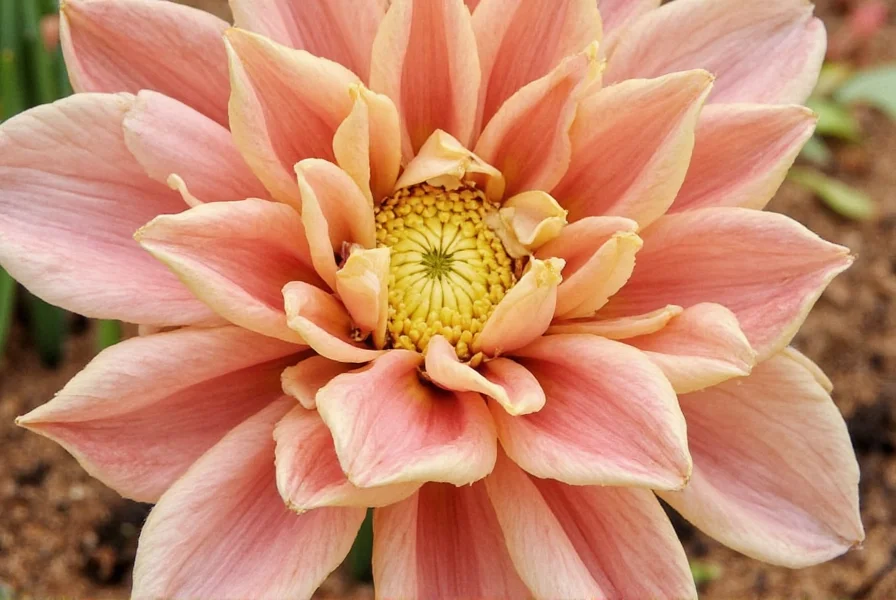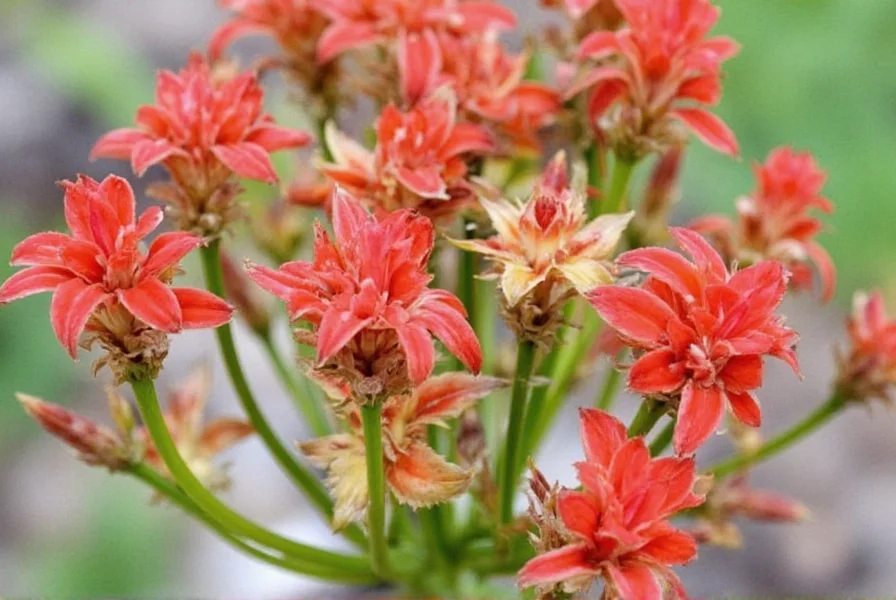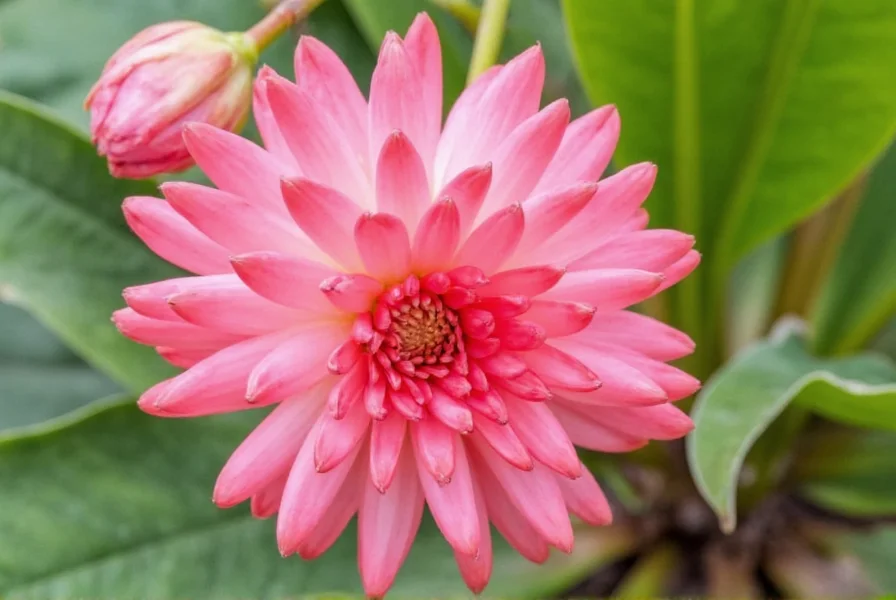The term ‘ginger torch’ commonly refers to torch ginger, a remarkable tropical plant scientifically known as Etlingera elatior. This stunning botanical specimen, also called Bunga Kantan in Malaysia or Philippine wax flower, features large, cone-shaped inflorescences that bloom in vibrant shades of pink, red, or white. Unlike its culinary cousin Zingiber officinale (common ginger), torch ginger belongs to a different genus within the Zingiberaceae family, offering unique flavor profiles and applications without the intense spiciness associated with regular ginger.
Botanical Characteristics and Identification
Torch ginger stands 2-4 meters tall with pseudostems formed by overlapping leaf sheaths. Its most distinctive feature is the flower structure—a large, upright inflorescence that emerges from the center of the plant, resembling a lit torch (hence the name). The flower consists of overlapping pink bracts protecting delicate yellow stamens. The plant produces aromatic, fleshy rhizomes, though these are less commonly used than the flower buds and young shoots.
| Feature | Torch Ginger (Etlingera elatior) | Common Ginger (Zingiber officinale) |
|---|---|---|
| Height | 2-4 meters | 0.6-1 meter |
| Flower Structure | Large, torch-like inflorescence | Small, yellow flowers |
| Primary Culinary Use | Flower buds, young shoots | Rhizomes |
| Flavor Profile | Citrusy, floral, mild spice | Pungent, sharp heat |
| Native Region | Southeast Asia | Southern Asia |
Native Habitat and Cultivation Requirements
Torch ginger naturally thrives in the humid, tropical rainforests of Malaysia, Indonesia, Thailand, and the Philippines. It prefers partial shade to full sun, rich organic soil with excellent drainage, and consistent moisture. Successful cultivation requires temperatures between 24-32°C (75-90°F) with high humidity levels. Gardeners in temperate climates can grow torch ginger in containers that can be moved indoors during colder months, making growing torch ginger in containers a viable option for enthusiasts outside tropical zones.

Culinary Applications of Torch Ginger
The flower buds and young shoots of torch ginger are prized culinary ingredients throughout Southeast Asia. In Malaysian and Indonesian cuisine, Bunga Kantan adds a distinctive citrusy, floral note to dishes like asam laksa (spicy fish noodle soup) and rojak (fruit salad). Thai chefs incorporate it into curries and salads, while Filipino cooks use it in sinigang (sour soup). Unlike common ginger, torch ginger provides aromatic complexity without overwhelming heat, making it ideal for cooking with torch ginger blooms in delicate dishes.
Traditional Medicinal Uses and Research
Traditional medicine systems across Southeast Asia have utilized torch ginger for centuries. Communities in Malaysia and Indonesia employ it for treating digestive issues, respiratory conditions, and as an anti-inflammatory agent. Modern research into torch ginger medicinal properties shows promising antioxidant and anti-inflammatory compounds, though more clinical studies are needed. The plant contains flavonoids and phenolic compounds that may contribute to its traditional health applications, but it should not replace professional medical treatment for serious conditions.
Harvesting and Preservation Techniques
For optimal flavor, harvest torch ginger flower buds when they’re still tightly closed but showing color. The young shoots can be harvested when they reach 15-20 cm in height. To extend shelf life, store fresh buds in airtight containers with damp paper towels in the refrigerator for up to one week. For longer preservation, many Southeast Asian households prepare torch ginger in vinegar or freeze the buds after blanching. Drying is less effective as it diminishes the delicate floral aroma that makes torch ginger culinary uses so distinctive.
Substitutes When Torch Ginger Is Unavailable
Finding fresh torch ginger outside Southeast Asia can be challenging. When unavailable, consider these alternatives for different applications:
- For floral notes in salads: Young banana blossoms with a squeeze of calamansi lime
- For soups and curries: A combination of common ginger (reduced quantity) plus a touch of rose water
- For visual presentation: Artichoke hearts with pink grapefruit segments
While these substitutes can approximate certain aspects, none fully replicate the unique flavor profile of authentic torch ginger. Those seeking authentic ingredients might explore specialty Asian markets or online retailers that specialize in where to buy torch ginger products.

Cultural Significance Across Southeast Asia
Beyond its practical applications, torch ginger holds cultural importance throughout its native range. In Malaysia, Bunga Kantan features prominently in traditional wedding ceremonies and decorative arrangements. Indonesian communities incorporate it into ceremonial foods, while in the Philippines, it appears in regional festivals celebrating tropical biodiversity. This cultural dimension adds another layer to understanding the complete significance of torch ginger flower identification beyond mere botanical classification.
Frequently Asked Questions
Is torch ginger the same as common ginger?
No, torch ginger (Etlingera elatior) and common ginger (Zingiber officinale) belong to different genera within the ginger family. Torch ginger is primarily used for its flower buds and young shoots, offering a citrusy, floral flavor without the intense heat of common ginger, which is used for its rhizomes.
Can I grow torch ginger in a non-tropical climate?
Yes, you can grow torch ginger in non-tropical climates by cultivating it in containers that can be moved indoors during colder months. It requires temperatures above 18°C (65°F), high humidity, and protection from direct afternoon sun. Growing torch ginger in containers with well-draining potting mix provides the best chance for success outside tropical zones.
What’s the difference between torch ginger and pink ginger?
Torch ginger refers specifically to Etlingera elatior with its distinctive torch-shaped flower. “Pink ginger” typically describes preserved young ginger rhizomes pickled in vinegar and sugar, which turn pink naturally. They are completely different products from different plants, often confused when searching for information about torch ginger vs regular ginger.
How do I use torch ginger in cooking?
Use the flower buds and young shoots of torch ginger in Southeast Asian dishes. Slice the buds thinly for salads, add to soups during the last few minutes of cooking, or use as a garnish. The flavor is citrusy and floral with mild spice, making it ideal for cooking with torch ginger blooms in dishes where you want aromatic complexity without overwhelming heat.
Does torch ginger have any health benefits?
Traditional medicine systems use torch ginger for digestive issues and inflammation. Modern research shows it contains antioxidants and anti-inflammatory compounds, supporting some traditional uses of torch ginger medicinal properties. However, scientific evidence is still limited, and it should complement rather than replace conventional medical treatments.











 浙公网安备
33010002000092号
浙公网安备
33010002000092号 浙B2-20120091-4
浙B2-20120091-4